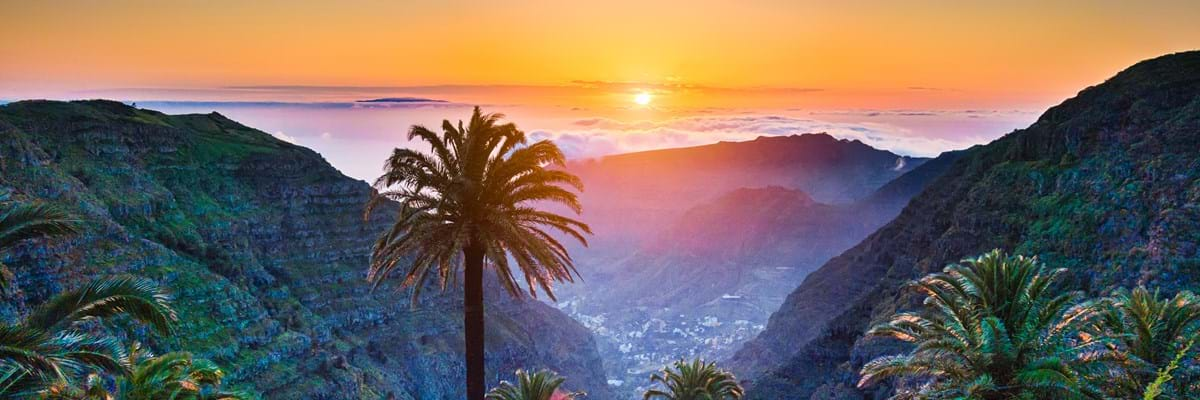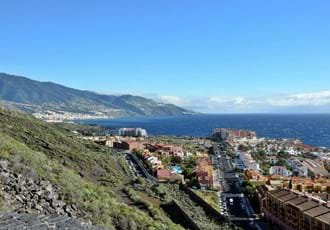Welcome to La Isla Bonita! (The Beautiful Island.)
With its sugar and banana plantations and laid-back Spanish culture, La Palma feels more South American than European. Maybe the Caribbean isn’t as far away as you thought!
The lush landscape, enchanting forests and dramatic volcanic landscape of La Palma make it one of the most beautiful islands in the world. The whole island has been declared a UNESCO biosphere reserve.
Heart-shaped La Palma is only 28 miles long and 17 miles at the widest point which makes it one of the smallest of the seven Canary Islands. It is the least developed, the greenest and, some think, the most visually spectacular.
There is plenty to see and do for the five million tourists who visit every year. Its stunning dark-sand beaches, clear warm seas and eye-catching scenery make for an ultra-sensory experience and a holiday destination that stands out from others.
Temperatures change very little between the seasons and it is an ideal place to escape from the cold of winter. Trade winds and the Gulf Stream ensure that it seldom becomes too hot, even in the peak of summer, and rarely – if ever – gets cold!
The port city of Santa Cruz de la Palma is the island’s capital. It has ferry connections to the mainland and is a popular stop for cruise ships. The narrow, cobbled streets, grand waterfront houses and colourful markets all help to make Santa Cruz one of the prettiest cities of the Canary Islands.
Nature lovers and walking enthusiasts of all levels will be in their element, as there are over 1,000km of footpaths on La Palma, covering a varied landscape of prehistoric forests, deep gorges and imposing volcanoes.
The island’s towns and villages, dotted along the eastern coastline and the western valley, are charming and interesting to visit. The people are relaxed, welcoming and very proud of their lovely green island of the palms.





























